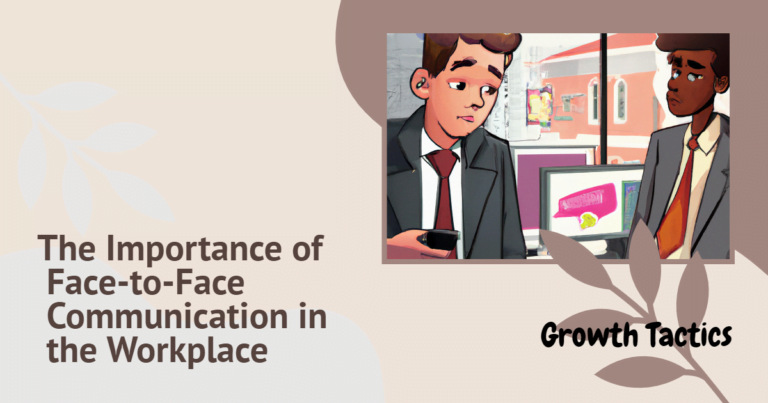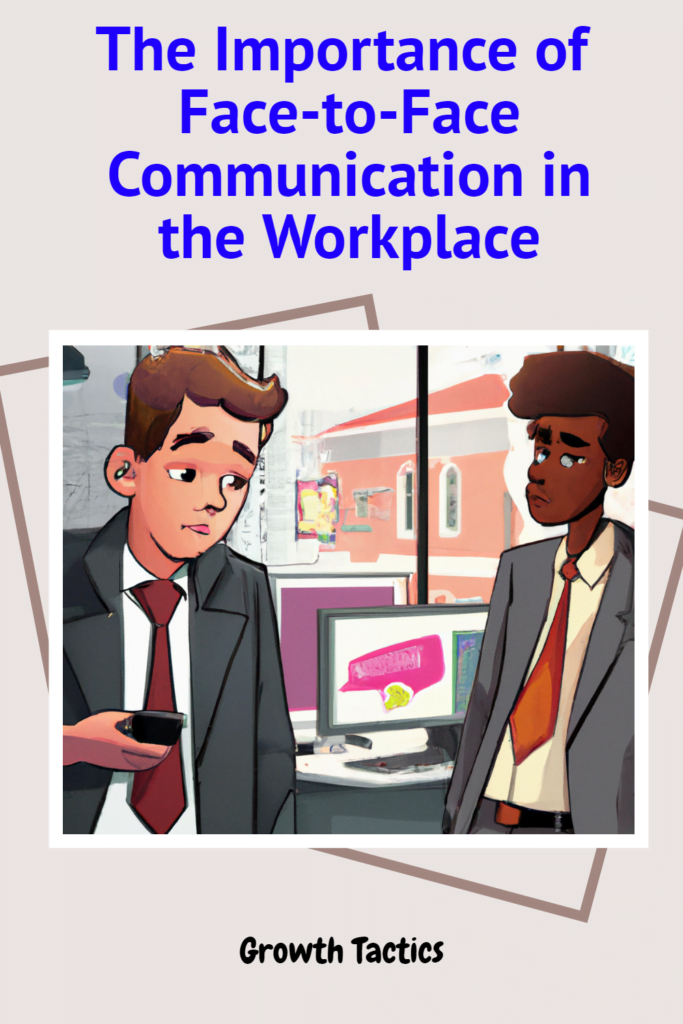Have you ever typed out a message or sent an email, only to have it misunderstood by its recipient? It’s a common issue in today’s digital workplace, where the nuances of tone and intent can easily get lost in translation. That’s precisely why face-to-face communication holds such a critical role in the workplace. Engaging directly with colleagues not only minimizes misunderstandings but also strengthens relationships fosters teamwork, and enhances overall productivity. Let’s dive into the myriad benefits that in-person interactions can bring to our professional lives.
Jump To Section
The Essence of Face-to-Face Interaction
In a work setting, talking directly to someone is key. We need more than text on a screen. Tone, gestures, and looks play a big role in getting a message across. These things give life to our words.
When we chat face-to-face, answers, and ideas come fast. This quick give-and-take helps clear up any mix-ups right away. A puzzled look can lead to more explanation. A nod shows that the message is clear.
Talking in person is more than just trading words. It’s about building a space where teamwork thrives. Face-to-face talks can spark creativity and lead to better teamwork. Problems often get solved more easily this way.
Also, some of the best chats happen outside of meetings. Think of talks over coffee or quick catch-ups. These moments connect people at work.
In short, nothing beats talking in person at work. It connects us and helps us work well together. Even with tech changes, keeping real talks alive is important for a strong team.
The Technology Twist
In recent years, the way we communicate at work has shifted significantly, especially with the rise of remote working. Tools like Zoom, Microsoft Teams, and Google Meet have become essential, helping bridge the gap when face-to-face interactions are not possible.
Video conferencing has its perks. It lets us see and speak to each other in real-time, even if we are miles apart. This visual connection keeps some of the benefits of in-person talks, like seeing someone’s facial expressions or gestures. It helps us pick up on the mood and reactions that text-based communication misses.
However, it’s not the same as being in the same room. Video calls can sometimes feel less personal and there can be technical issues like delays or poor connection. Plus, looking at a screen for hours can be tiring. This is often called “Zoom fatigue.”
Yet, these digital tools have been instrumental during times like the COVID-19 pandemic. They have allowed teams to stay connected and businesses to keep running, even when offices were closed. They have shown that, while they can’t fully replace in-person interaction, technology can offer a powerful alternative in challenging times.
As we move towards a more flexible work environment, combining the strengths of face-to-face and technological communication will be crucial. Using tech wisely can enhance our interactions and keep us connected, no matter where we are. This hybrid approach might be the future of workplace communication.
Overcoming Challenges in Face-to-Face Communication
While face-to-face communication has clear benefits, it also comes with its own set of challenges. Whether it’s navigating individual personality differences or managing group dynamics, effective communication requires a thoughtful approach.
Misinterpretation
In face-to-face communication, words are only part of the story. The tone of voice, facial expressions, and body language can sometimes send mixed signals. It’s important to be aware of these non-verbal cues and ensure they match the intended message.
Emotional Responses
Direct conversations can sometimes trigger strong emotions. When discussions become heated, staying calm and respectful is essential. Keeping emotions in check can prevent misunderstandings and help maintain professional relationships.
Cultural Differences
In today’s global workplace, cultural diversity can lead to different expectations during interactions. Being open to learning about and respectful towards other cultures can help create an inclusive environment that values clear, considerate communication.
Distractions
Modern workplaces are often busy and full of distractions. From background noise to other people’s conversations, it can be hard to focus. Selecting a quiet location for discussions can help minimize disruptions and facilitate better understanding.
Time Constraints
With hectic schedules, finding time for face-to-face communication can be a challenge. Prioritizing these interactions, even if they’re brief, can foster connection and clarity.
Overcoming Personal Biases
Every individual comes into a conversation with their own set of preconceived notions and biases. These can cloud judgment and influence how messages are received and interpreted. To overcome this challenge, it’s essential to approach each conversation with an open mind, focusing on understanding the other person’s perspective without jumping to conclusions.
Language Barriers
In multilingual work environments, language differences can impede clear communication. Speaking clearly, using simple language, and sometimes even repeating key points can help ensure that everyone is on the same page. When necessary, employing the services of a translator or utilizing translation technology can aid in bridging communication gaps.
Inconsistency in Communication Styles
Different people have different communication styles; some may be more direct, while others are more circumspective. Recognizing and adapting to various communication styles can enhance interactions and prevent potential conflicts. This might involve adjusting one’s own style to better align with others’ preferences during key conversations.
Fear of Conflict
Sometimes, the challenge in face-to-face communication is the fear of instigating conflict, especially when discussing sensitive issues. Creating a supportive environment that encourages open and honest dialogue can help mitigate this fear. It’s beneficial to establish ground rules for discussions which promote respect and constructive feedback.
Over-reliance on Digital Communication
With the convenience of digital tools, there’s a tendency to avoid face-to-face conversations, particularly when delivering negative feedback or handling sensitive matters. Encouraging regular in-person interactions can help maintain a human connection and build trust, making difficult conversations more manageable and productive.
Addressing these challenges is about active listening, clear articulation, and being adaptable. It’s also about creating a space where each person feels comfortable expressing themselves. With effort and understanding, these hurdles can be overcome, allowing for more effective and meaningful face-to-face communication.
Conclusion
In conclusion, the vitality of face-to-face communication in the modern workplace cannot be overstated. Despite the advances in technology that allow for varied forms of communication, the richness, clarity, and depth provided by direct interactions remain unparalleled. Overcoming challenges such as misinterpretation, emotional responses, and cultural differences not only enriches our conversations but also strengthens professional relationships.
Further, by addressing personal biases, language barriers, and differences in communication styles, we foster a more inclusive and understanding work environment. This approach encourages open and honest dialogue, mitigating the fear of conflict and making difficult conversations more manageable and productive. Regular in-person interactions help maintain a human connection, build trust, and ensure that sensitive matters are handled with the care they merit.
As we navigate through evolving modes of work and communication, prioritizing and refining our face-to-face interaction skills will continue to be indispensable. Embracing the unique nuances and complexities of direct communication unlocks the full potential of our collaborative efforts. By actively working to overcome the inherent challenges of face-to-face communication, we create a more connected, productive, and empathetic workplace.


